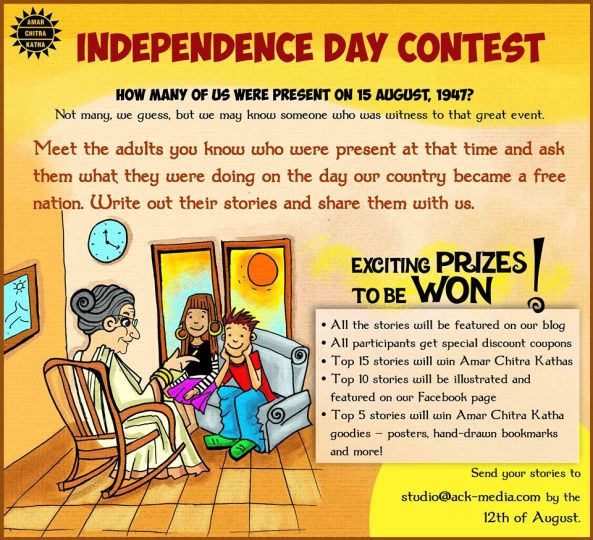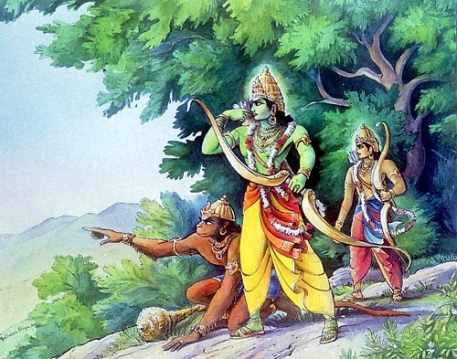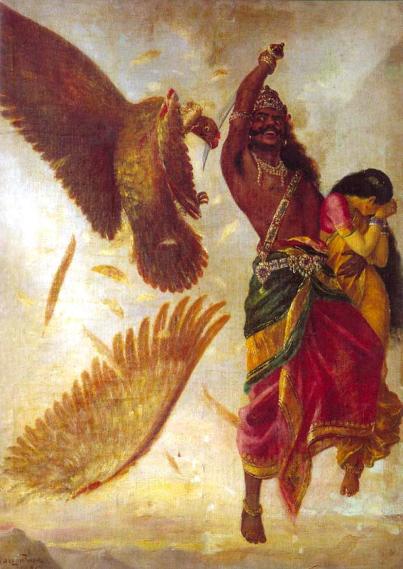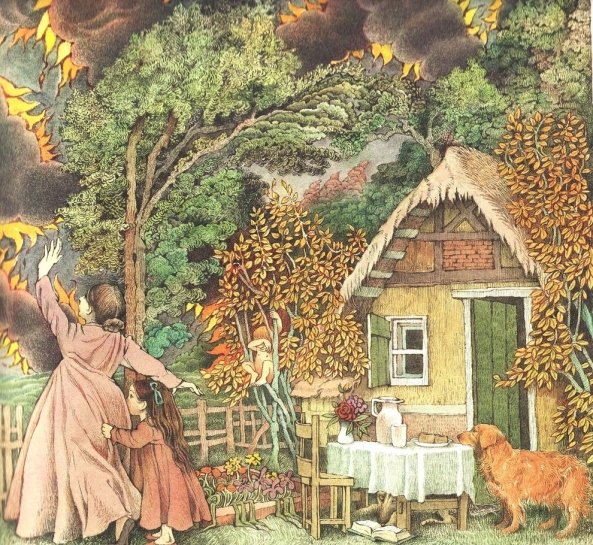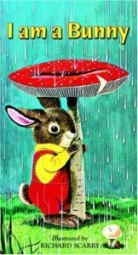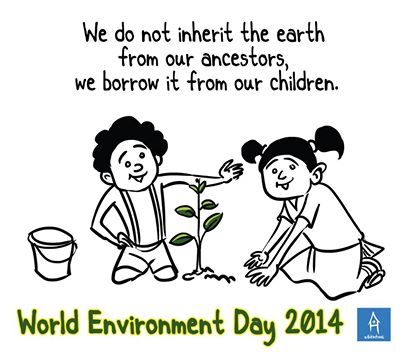Please visit our brand new home on the internet! We had overwhelming support from you during the past two years and we pray that we continue to get them . There were 7500 visits to the blog last year and we hope we will get similar attention for the new web site also. Stay tuned ! http://www.thelittlereaders.com
Library Cake Art- a library you can eat!! Isn’t this amazing?!!!
Independence Day Contest
Eid Mubarak
Adhyathma ramayanam season at TLRC
TLRC members raised many questions during the narration of Adhyathmaramayana today . Why didn’t Rama tell Sita that the golden deer was a demon? Why didn’t Lakshmana who could draw a powerful line to protect Sita in the jungle couldn’t tell her about the impending disaster? Why Rama , who is the incarnation Lord Vishnu couldn’t kill Ravana instantly and had to seek the help of Hanuman?We couldn’t answer them but these doubts made us immensely happy . It is often asked why is there suffering in the world if God is is all powerful . Why can’t he stop evil? Suffering can fall into three simple categories: emotional, mental, and physical suffering. But, there are a variety of causes for suffering. We make them think. Talk. Express and  explore.
explore.
When you give your child a computer his/ her mind stops working.
e-children!

When computers spin out images, a child’s mind stops working.
A delightful concocted video shows how medieval readers unused to the idea of books might have received their arrival. An adult learner/reader is waiting for his tutor to come along and show him how to handle a book: how to position it, open it, turn page upon page, go back to the first or second page if the reader wants to revisit and lastly how to close the book.
“How do I open it again?” shrieks the learner holding the book wrong side up when the ‘tutor’ closes the book and stands up to go.
“L-i-i-ke, this!” says the teacher turning the book the right way up and opening the book to the first page again. “Remember to keep it firmly closed when you finish.”
That video would remind every one of us of our first encounters with the PC and Kindle. But if you watch how speedily children pick up technology of any kind you would believe that love of it is hard-wired into us. The iPad and the PC give us a grand illusion: that by being netted into a neutral body of information we are in control of a world of knowledge. Now that might be partially true but my concern is the learning experience. How do children handle this world of information, turn it into knowledge, spend time thinking about it and assimilating it?
I’m not ignoring the benefits. For a child (under seven) who can use an iPad or a laptop, there are not many things that can outstrip a computer; but caretakers everywhere must understand that if young children are allowed free access to computers, they are missing the opportunity to develop the personal, social and emotional skills they will need to function effectively right through life.
As a young child’s attention naturally jumps from one thing to another, and some forms of electronic media may prolong this immaturity, the developmental milestones of the human brain between the ages of six and seven are best spent in physically and linguistically enriching environments rather than with images produced in the abstract by the computer. Exciting, barely understood graphics and special effects, coupled with the temptation to click impulsively, encourage stimulus-bound behaviour which, in turn, will surely contribute to attention problems later in life.
Many teachers are worried that computers interfere with the student’s focus on language skills and imaginative thought processes; they also fear that internal negotiation is affected. In fact, in a study of child care, researchers found that children’s intelligence, academic success, and emotional stability were determined primarily by the personal and language interactions they had with adults and not by the time spent on computers. All experts are worried about computers taking precedence over social and language-related experiences. Though there are very interesting things one can do with computers, the one-on-one presence of an adult is important because children need a mentor to discuss, ask questions, and explain.
Then there is the question of handwriting! Is shifting to the keyboard really a great step? A recent article by Maria Konnikova says that “the links between handwriting and broader educational development run deep. Children not only learn to read more quickly when they first learn to write by hand, but they also remain better able to generate ideas and retain information. In other words, it’s not just what we write that matters — but how.”
Added to this is the finding that children whose learning is largely from computers begin to exhibit impatience and a lack of interest in anything or anyone but themselves. Children need lots of practice to integrate their senses through different kinds of play experiences. They must be allowed to manage their own minds and not have them controlled by an unseen mind elsewhere which doesn’t care what happens to them. When computers spin out images, the child’s mind stops working.
Is this what we want?
minioup@gmail.com
Keywords: chilhood, psychology, technology, child rearing, parenting, Mini Krishnan
List of the things they don’t teach you at school :)
I’ve been making a list of the things they don’t teach you at school. They don’t teach you how to love somebody. They don’t teach you how to be famous. They don’t teach you how to be rich or how to be poor. They don’t teach you how to walk away from someone you don’t love any longer. They don’t teach you how to know what’s going on in someone else’s mind. They don’t teach you what to say to someone who’s dying. They don’t teach you anything worth knowing.
Neil Gaiman quotes
Spot the Dog creator Eric Hill dies aged 86 :(
No to school Poem ~ composed by my son Adityan , this morning.
“Children do live in fantasy and reality; they move back and forth very easily in a way we no longer remember how to do.”Maurice Sendak (June 10, 1928- May 8, 2012)
TLRC Remembers Richard Scarry: (June 5, 1919-April 30,1994)
ആദിത്യ ഹൃദയം
അന്ധ കാരന്തകാരായ നമോ നമ:
ചിന്താമണേ , ചിദാനന്ദയതേ നമ:
നിഹാര നാശകരായ നമോ നമ:
മോഹ വിനാശകരായ നമോ നമ:
ശാന്തായ ,രൗദ്രായ, സൗമ്യായ, ഘോരായ
കാന്തിമതാം, കാന്തിരൂപായതേ നമോ നമ :
സ്ഥാവര ജംഗമാചര്യയതേ നമ :
ദേവായ വിശ്വൈക സാക്ഷിണെ തേ നമ :
സത്യ പ്രാധാനായ തത്ത്വായതേ നമ :
സത്യ സ്വരൂപയായ നിത്യം നമോ നമ :

ആദിത്യഹൃദയം, ജടായുസ്തുതി, പാര്ഥസാരഥി വര്ണനം, പ്രഹ്ലാദസ്തുതി തുടങ്ങിയ മഹത്തായ സ്തോത്രസന്ദര്ഭങ്ങള് മാന്ത്രികശക്തി ഉള്ളവയാണ്. ഇവയില് ആദിത്യഹൃദയം ഊര്ജ സംഭൃതികൊണ്ടും ഫലദാന സിദ്ധികൊണ്ടും മുന്നില് നില്ക്കുന്നു.
ബ്രാഹ്മണര് വിശ്വാമിത്രന്റെ ഗായത്രി ചൊല്ലുന്നതിനു സമാനമായി അബ്രാഹ്മണമായ കേരളര് ജപിക്കുന്നതാണ് ‘സന്താപ നാശകരായ’ എന്നുതുടങ്ങുന്ന ആദിത്യസ്തുതി. ദീര്ഘമായ ഒരു സ്തുതിയുടെ നിര്വഹണമന്ത്രം ആണ് ഇത്.
രാമന് രാവണനുമേല് വിജയം ഉണ്ടാകാന് അഗസ്ത്യന് ശ്രീരാമന് നല്കുന്ന ഉപദേശം ആണ് ആദിത്യഹൃദയം. അത് ആദ്യവസാനം ഉരുവിടുന്നതാണ് നല്ലത്. ”അഭ്യുദയം നിനക്കാശുവരുത്താന്” എന്നുതുടങ്ങി ”ശത്രുക്ഷയം വരുത്തീടുക സത്വരം” എന്നതുവരെ.
ഈരടി സ്വരൂപത്തില് ആണ് കിളിപ്പാട്ട്. ഛന്ദസ്സ് അനുസരിച്ച് നോക്കുകയാണെങ്കില് ”സന്താപനാശകരായ” എന്നത് ഈരടിയുടെ രണ്ടാമത്തെ പാദം ആണ്. ഛന്ദോദേവതയുടെ അപ്രീതി ഉണ്ടാകാതിരിക്കാന് ആദ്യത്തെ വരിചേര്ത്ത്
”സന്തതം ഭക്ത്യാ നമസ്കരിച്ചീടുക
സന്താപ നാശകരായ നമോനമഃ”
എന്ന് ജപിക്കുന്നതായിരിക്കും ഉചിതം.
ആദിത്യന്റെ നൂറ്റിയെട്ട് പര്യായങ്ങളും ഉള്ക്കൊണ്ട വിശിഷ്ടസ്തുതിയാണ്. അതിന്റെ നിര്വഹണ ഭാഗത്തിനുള്ള പ്രാധാന്യം പ്രാരംഭത്തിനും ഉണ്ട്. ആദിത്യ ഹൃദയമന്ത്രത്തിന്റെ ഫലസിദ്ധി പ്രപഞ്ചനം ചെയ്തിട്ട് അഗസ്ത്യന് സമസ്തവും സൂര്യന് ആണെന്ന് പറയുന്നു. ആ ഭാഗം അത്യപൂര്വമായ ഒരു ഉഡ്ഢയനം ആണ്. ഇരുപത്തിയെട്ടുതരം പറക്കലുകളെപ്പറ്റി മഹാഭാരതത്തില് പറയുന്നുണ്ട്. ഇരുപത്തിയെട്ടാമത്തെ തലത്തിലേക്ക് മന്ത്രോച്ഛാരണം ഉയര്ന്നുപോകുന്നു. ചിറകൊതുക്കിയിരിക്കുന്ന പരുന്ത് പറന്നുപറന്ന് ആകാശത്തിന്റെ ഔന്നത്യവിഹാരം ആകുന്നതുപോലെ
”നിത്യമാദിസഹൃദയമാം മന്ത്രമി-
തുത്തമമെത്രയും ഭക്ത്യാജപിക്കടോ” എന്ന വരി കഴിഞ്ഞാണ് ഈ അത്ഭുതകരമായ പറക്കല്.
”ദേവാസുരോരഗചാരണകിന്നര
താപസ ഗുഹ്യകയക്ഷേരക്ഷോഭൂത
കിം പുരാഷാപ്സരോ മാനുഷാദ്യന്മാരും
സമ്പ്രതി സൂര്യനെത്തന്നെ ഭജിപ്പതും
ദേവകളാകുന്നതാദിത്യനാകിയ
ദേവനത്രേ പതിന്നാലുലോകങ്ങളും
രക്ഷിപ്പതും നിജരശ്മികള്കൊണ്ടവന്
ഭക്ഷിപ്പതുമവന് കല്പകാലാന്തരേ
ബ്രഹ്മനും വിഷ്ണുവും ശ്രീമഹാദേവനും
ഷണ്മുഖന്താനും പ്രജാപതിവൃന്ദവും
ശുക്രനും വൈശ്വാനരനും കൃതാന്തനും
രക്ഷോവരനും വരുണനും വായുവും
യക്ഷാധിപനുമീശാനനും ചന്ദ്രനും
നക്ഷത്രജാലവും ദിക്കരിവൃന്ദവും
വാരണവക്ത്രനുമാര്യനും മാരനും
താരാഗണങ്ങളും നാനാഗ്രഹങ്ങളും
അശ്വിനീപുത്രരുമഷ്ടവസുക്കളും
വിശ്വദേവന്മാരും സിദ്ധരും സാദ്ധ്യരും
നാനാപിതൃക്കളും പിന്നെ മനുക്കളും
ദാനവന്മാരുമുരഗസമൂഹവും
വാരമാസര്ത്തുസംവത്സരകല്പാദി
കാരകനായതും സൂര്യനിവന് തന്നെ.”
അത്യുന്നത വിഹാരത്തിലാണ് ഇതിനെ തുടര്ന്ന സൂര്യപര്യായ മഞ്ജരി വരുന്നത്.
ഈ മന്ത്രം ഉഷ്ണപ്രദാനം നല്കുന്നു. ഇത് പകല് മാത്രമേ ജപിക്കാവൂ എന്നു പാരമ്പര്യം ഉണ്ട്. ആദിത്യഹൃദയമന്ത്രം ആവര്ത്തിച്ചുപാസിച്ചാല് ആത്മബലവും അഭയവും ഉണ്ടാകും. മാര്ഗവിഘ്നങ്ങള് ഒഴിയും. കാകളിവൃത്തത്തിന്റെ സാധാരണ ചൊല്വഴക്കങ്ങള്ക്കപ്പുറം നാനാരീതിയില് ”സന്താപനാശകരായ” ആലപിക്കാം. ധ്യാനസ്ഥരായി ജപിക്കുന്നവര്ക്ക് കാവ്യപ്രക്രിയയുടെ ഗൂഢവഴികള് പകര്ന്നുകിട്ടും.
രാവിലെ ആദിത്യഹൃദയവും വൈകുന്നേരം പ്രഹ്ലാദന്റെ നരസിംഹസ്തുതിയും പീഡകള് വരുമ്പോള് നാല്പത്തിയൊന്നുദിവസം ഗജേന്ദ്രമോക്ഷവും പണ്ടുകാലങ്ങളില് വീടുകളില് വായിച്ചിരുന്നു.
വിശ്വാസവും നിരഹങ്കാരമായ ഉപാസനയുമാണ് ഭക്തിമാര്ഗം. അവയ്ക്ക് നിമിത്തങ്ങള് ആണ് സ്തോത്രങ്ങള്. ശാസ്ത്രഗര്ത്തങ്ങള് തോറും ചാടിവീണു മോഹിക്കാതെ വിശ്വാസത്തിന്റെ വഴിയെ പുരോഗമിക്കാനാണ് എഴുത്തച്ഛന് പ്രബോധനം ചെയ്യുന്നത്.
ഇത്തരം കാര്യങ്ങളില് അവരവരുടേതായ അനുഭവജ്ഞാനത്തിന് പ്രാധാന്യം ഉണ്ട്. ആദിത്യഹൃദയം ഫലസിദ്ധിയുള്ള ഒരു സ്തുതിയായി എനിക്ക് അനുഭവപ്പെട്ടിട്ടുണ്ട്.
സൗരയൂഥത്തില് യൂഥനാഥനായ സൂര്യന് ആണ് എല്ലാം. സൂരോന്മുഖമായ ഈ സ്തോത്രം അച്ഛനമ്മമാര് കുട്ടികളെ പഠിപ്പിക്കണം. സ്വന്തം ചേതനയെ പ്രപഞ്ചഗഹനതയുടെ പ്രതിസ്പന്ദമാക്കാന് അതുസഹായിക്കും.
“You think man can destroy the planet? What intoxicating vanity. Let me tell you about our planet. Earth is four-and-a-half-billion-years-old. There’s been life on it for nearly that long, 3.8 billion years. Bacteria first; later the first multicellular life, then the first complex creatures in the sea, on the land. Then finally the great sweeping ages of animals, the amphibians, the dinosaurs, at last the mammals, each one enduring millions on millions of years, great dynasties of creatures rising, flourishing, dying away — all this against a background of continuous and violent upheaval. Mountain ranges thrust up, eroded away, cometary impacts, volcano eruptions, oceans rising and falling, whole continents moving, an endless, constant, violent change, colliding, buckling to make mountains over millions of years. Earth has survived everything in its time. It will certainly survive us. If all the nuclear weapons in the world went off at once and all the plants, all the animals died and the earth was sizzling hot for a hundred thousand years, life would survive, somewhere: under the soil, frozen in Arctic ice. Sooner or later, when the planet was no longer inhospitable, life would spread again. The evolutionary process would begin again. It might take a few billion years for life to regain its present variety. Of course, it would be very different from what it is now, but the earth would survive our folly, only we would not. If the ozone layer gets thinner, ultraviolet radiation sears the earth, so what? Ultraviolet radiation is good for life. It’s powerful energy. It promotes mutation, change. Many forms of life will thrive with more UV radiation. Many others will die out. Do you think this is the first time that’s happened? Think about oxygen. Necessary for life now, but oxygen is actually a metabolic poison, a corrosive glass, like fluorine. When oxygen was first produced as a waste product by certain plant cells some three billion years ago, it created a crisis for all other life on earth. Those plants were polluting the environment, exhaling a lethal gas. Earth eventually had an atmosphere incompatible with life. Nevertheless, life on earth took care of itself. In the thinking of the human being a hundred years is a long time. A hundred years ago we didn’t have cars, airplanes, computers or vaccines. It was a whole different world, but to the earth, a hundred years is nothing. A million years is nothing. This planet lives and breathes on a much vaster scale. We can’t imagine its slow and powerful rhythms, and we haven’t got the humility to try. We’ve been residents here for the blink of an eye. If we’re gone tomorrow, the earth will not miss us.”
― Michael Crichton, Jurassic Park / Congo

